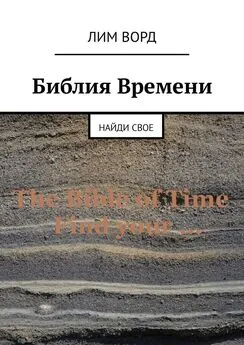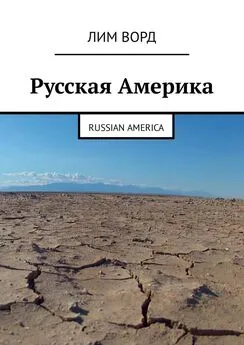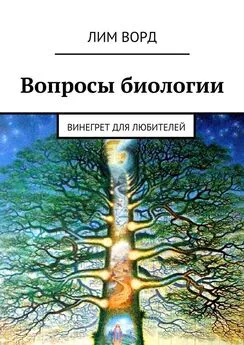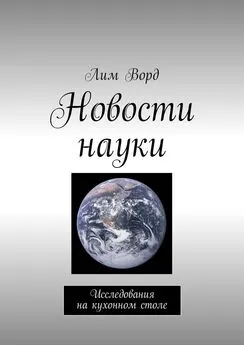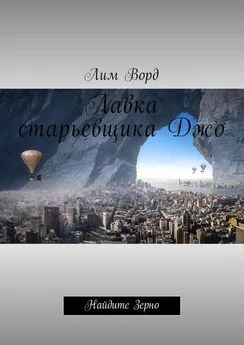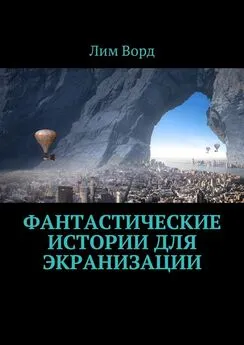Лим Ворд - Библия Времени. Найди свое
- Название:Библия Времени. Найди свое
- Автор:
- Жанр:
- Издательство:неизвестно
- Год:неизвестен
- ISBN:9785449318695
- Рейтинг:
- Избранное:Добавить в избранное
-
Отзывы:
-
Ваша оценка:
Лим Ворд - Библия Времени. Найди свое краткое содержание
Библия Времени. Найди свое - читать онлайн бесплатно ознакомительный отрывок
Интервал:
Закладка:
Be that as it may, cute trilobites, and with them Paleozoic himself, come to an end.
The restoration of the biosphere takes five million years. The Triassic, the first period of the Mesozoic Era, opens.
Among the surviving (diapsidic) reptiles are archosaurs («initial lizards», classified by some features of the skull, nasal septum, jaws) – which become the ancestors of modern birds and crocodiles, as well as the entire family of now extinct dinosaurs. Belemnites appear, a distant analogy of squid, ammonites, with shells twisted into a spiral, gastropods (gastropods), ie, snails, and also well-known to us bivalve mollusks – oysters.
Of the shellfish with ganoid scales (rhombic plates with hook-shaped protrusions, which are connected by them in the likeness of an external skeleton), the bony ones, in fact, the same ray-fish, stand out.
Formed a classic turtle. Synapsides, they are the theromorphs, they are the same animal-like, namely, their suborder cynodonts of the group of theriodontes (zverozuby lizards), become the ancestors of mammals. This lizard has four unusually long paws (legs), laying eggs (like some modern mammals), most likely has a wool, judging by the structure of the nasal septum, warms the inhaled air, and the cold-blooded reptile in general, is now not.
Trias lasts almost 50 million years, and ends 200 million years ago, another global catastrophe, the so-called. Triassic-Jurassic extinction of species. Causes may be the same as that which marked the arrival of a new era. The result – the extinction of half of the species, the release of many ecological niches – which without delay occupy dinosaurs.
Dinosaurs, that is, «terrible lizards» differ from ordinary reptiles for that time only by their gigantic size. There is no fundamental difference. But, as you know, size – often it matters. The largest representative of this order, a group of herbivorous sauropods (four-legged) – seismosaurus, reaches a length of 36 meters, in height – as far as could raise the neck – 20 meters, with a weight of 140 tons. Titanosaurus weighs «only» 50 tons, but is more widely represented in fossil remains. Theropods (reindeer, moving on two legs), as a rule – predators. Their champion is tyrannosaurus rex, height to the end of the thigh (trunk) is 4.5 meters, length is 13 meters, weight is 8 tons. A slightly smaller mass can boast of a modern African elephant.
The Jurassic period (Jurassic, according to the name of the mountains in Switzerland) is characterized by limestones, detrital rocks (sharp stones), shales (rocks with layered fusion of minerals), magmatic rocks (basalt – friable gray stone with yellow-green crystalline impregnations, granite,), clays and sands. All this is evidence of the rapid disintegration of Pangea into continental blocks, with the concomitant formation of many shallow warm seas. Tree-like ferns («vascular plants») are widely spread, with branches lying in the same plane forming a kind of leaf, and also similar to them – as well as modern palms, slightly less lush 10—18 meter long cycads. Reef communities formed from the Triassic, coral polyps are formed.
Archeopteryx, a dead end of evolution, appears – an «ancient bird», the size of a crow, rather clumsy, as paleontologists say, planning from tree to tree. Actually, the scientific community has not yet developed a generally accepted theory of bird origin. In any case, it is in the Jurassic, pterosaurs, flying warm-blooded lizards, conquer the air. The most famous representative of this genus (the suborder of pterodactyli), the hero of the film «The Jurassic Park» is Pteranodon, with a wingspan of 7 meters, but also known in North America is the Quetzalcoatl, 12 meters wide – which corresponds to the size of the light bomber of the Second world war. Their weight is up to 200 kg. – contradicts the conclusions of those biophysical scientists who prove the impossibility of a free flight for the beings of such a mass (under terrestrial conditions).
The cretaceous period (chalk), which began 145 million years ago according to a rather arbitrary decision of scientists, is characterized by abundant sedimentary deposits of the writing chalk – formed from the remains of invertebrate marine animals – mainly ammonites, already remembered by us on twisted shells. Extensive areas of land, in particular, Africa and South America, India and Australia diverge from one another further, forming new water spaces, warm shallows and islands. Appear flowering plants, they are angiosperms – with a flower as a reproductive organ and quite complex, the so-called. double fertilization (an embryo sac of several cells and, in fact, an ovum).
This pleases insects, becoming the main pollinators. Their diversity increases many times. In the sky, along with pterodactyls, more like bats, real, that is, flying birds fly.
All this idyll is over 65 million years ago, during the most famous, small-Paleogene great extinction. The main version is the fall of the celestial body, which caused the appearance of the Chicxulub Crater near the Yucatan Peninsula (Mexico). The diameter of the asteroid is 10 kilometers, the depth of the crater is 17—20 km. the width is 180 km. Thus, the impact force is 2 million times higher than the energy released during the testing of the powerful hydrogen bomb AN 602 on Novaya Zemlya in 1962.
Perhaps, the impact is supported by the fall of the second celestial body, an asteroid or a comet – which gave rise to the oval Shiva crater near the western coast of modern India – 400 kilometers in the narrowest part. Apparently, after the first outbreak of extinction, some species of dinosaurs existed one to two million years.
Be that as it may, the deposition of chalk separates from the rocks of the next period a layer of monotonous clay, sand and lime. A new era – Cainozoic («new life»). Starts with the Paleogene. This geological period is distinguished by an even tropical climate, the dominance of mammals, birds, the first cetaceans, and also bony fishes. Some cephalopods get rid of shells, turn into known octopuses, cuttlefish and squid.
Neogene is fastened 23 million years ago. Whales are completely formed.
Their basis, incidentally, is a detachment of mesonichia, now extinct (existed 63 to 28 million years ago), one of the few predators among ungulates. Some of them, for example, the genus Mesonix, resembled a wolf, others – Andrewsarch – a bear, while the length of the body was 3.7 meters. Representatives of other (related) genera are quite similar to cave lions.
…Placental, that is, viviparous mammals dominate. The entire fauna of the period is already clearly similar to the modern one.
Quaternary period, he is anthropogen («creating man») begins 2, 588 million years ago. It is separated from the previous epoch by the paleomagnetic Gauss-Matuyama boundary: the S-N poles of the Earth change places, which is determined by the studies of the primary magnetization of the lava of the corresponding time. The first epoch – Pleistocene (from other Greek words «numerous» and «modern») – the time of great glaciations and interglacial periods, ends 11.7 thousand years ago. There are a lot of animals, including those that are not found now-woolly rhinoceroses, saber-toothed tigers, cave lions, marsupials, mammoths and diprotons (some kind of marsupial grizzly ones), mastodons (extremely simplified – short-haired mammoths with a special structure of jaws). Hard cooling (glacials), during which glaciers occupy up to 30% of the land area last an average of 40 thousand years, are replaced by 20 – thousand-year interglacials (interglacials).
The last glacial epoch, the Wurm glaciation begins 110 thousand years ago. From Norway, across Eurasia, a horrifying glacial shield disintegrates. On the whole, the coverlets of Antarctica are formed (there is a version, it happened later, almost 10 thousand years BC). The last glacial maximum ends precisely in time. The level of the World Ocean, which was less than the modern one at 120—135 meters, is gradually rising.
Everything seems to be good. But, why did the fossil animals adapted to many perturbations die out? There is evidence, a good reason for this – the fall of a large meteorite, in fact, an asteroid in the area of present-day Canada (the neighborhood of Quebec), or Mexico, associated with that sharp, during the day, global, although relatively short (a thousand years) cold snap.
One way or another, the Holocene begins («whole» and «new»), the last interglacial known to us, continuing to this day.
Actually, man stands out from the animal world three million years ago, in the Paleolithic (the first landmark of the Homo scale), roughly coinciding with the Pleistocene. About 150,000 years ago, Homo habilis appeared, the so-called. a man of skill, capable, albeit primitive, but of thinking, creating, using stone, bone and wooden tools.
People, almost indistinguishable from modern ones, Homo sapiens are formed 35—40 thousand years before us. These numbers are very controversial, but we can represent them as a basis for subsequent reasoning. Their skills – the production of ceramics, fishing, hunting, tools, clothing, bone, leather, wood.
There are the first, as yet primitive religious rituals.
It is generally believed that, at that time, Neanderthals literally co-existed side by side and Neanderthals were co-existing, and Cro-Magnon people – in some way initially very developed hominids. This theory is obvious, smells of Nazism, it is controversial, but as a fetish of academic science, we can consider it.
Stone, Bronze, Iron Age
The late Holocene (otherwise, the Upper Paleolithic) is marked by a transition to the next stages of human formation. Neolithic, or stone age, lasts from the beginning of the Pleistocene to, in fact, (relatively) late Holocene. It is preceded by the Mesolithic, when during 3—4 thousand years the skills of joint hunting accumulate, speech is improved, understanding of social norms, taboos, traditions is developed.
In the Neolithic, in addition to everything, the domestication of a dog and a horse occurs. The last, we will notice, in both Americas, 12 thousand years ago, alas, completely die out.
Modern, officially recognized scientists publicize the first archaeological (human) culture – the so-called. The «Hamburg», which appeared on the territory of the modern Netherlands and Germany. About it testify, in particular, stone tips of spears with a lateral notch and stone incisors. The oldest city of the Earth, Jericho (in Arabic – «Ariha», Greek – «Jericho», located in the territory of the Palestinian National Authority, 30 km north-west of Jerusalem) is mentioned in the annals.
Layer of time from 6, 5 thousand years ago, characterized by the transition of mankind to the bronze (in the New World, rather, copper-obsidian) century. By the 13th century. BC. this era of human development, characterized by the general, peaceful coexistence of tribes and peoples, the development of trade relations, the improvement of the psyche of people, ends. Some sources point to the split of the «single proto-Indo-European community», the grandiose resettlement of peoples, the loss of the old culture.
Recall: classical, so-called. «Bell» bronze is an alloy of copper with tin, in the proportion of 8 to 2. It is characterized by high hardness, which is not inherent in any of these metals individually, although at the same time it is also brittle.
Is this due to the peculiarities of the matter, iron or not, but the next century of civilization is marked by a series of turbulent military conflicts, at the same time, rapid technological development – the so-called pre-war. «Bronze collapse». For two or three centuries (this is still inexplicable), mankind falls into the abyss of oblivion, only vaguely defined great misfortunes, a general decline. Some speculations are the eruption of the Heucla Supercolcane in Iceland, 1159 BC, or Santorin, who is not inferior to him, a total drought, or, in the end, the appearance of a miracle of weapons (iron) and the unprecedented activation of the military class.
Читать дальшеИнтервал:
Закладка:
